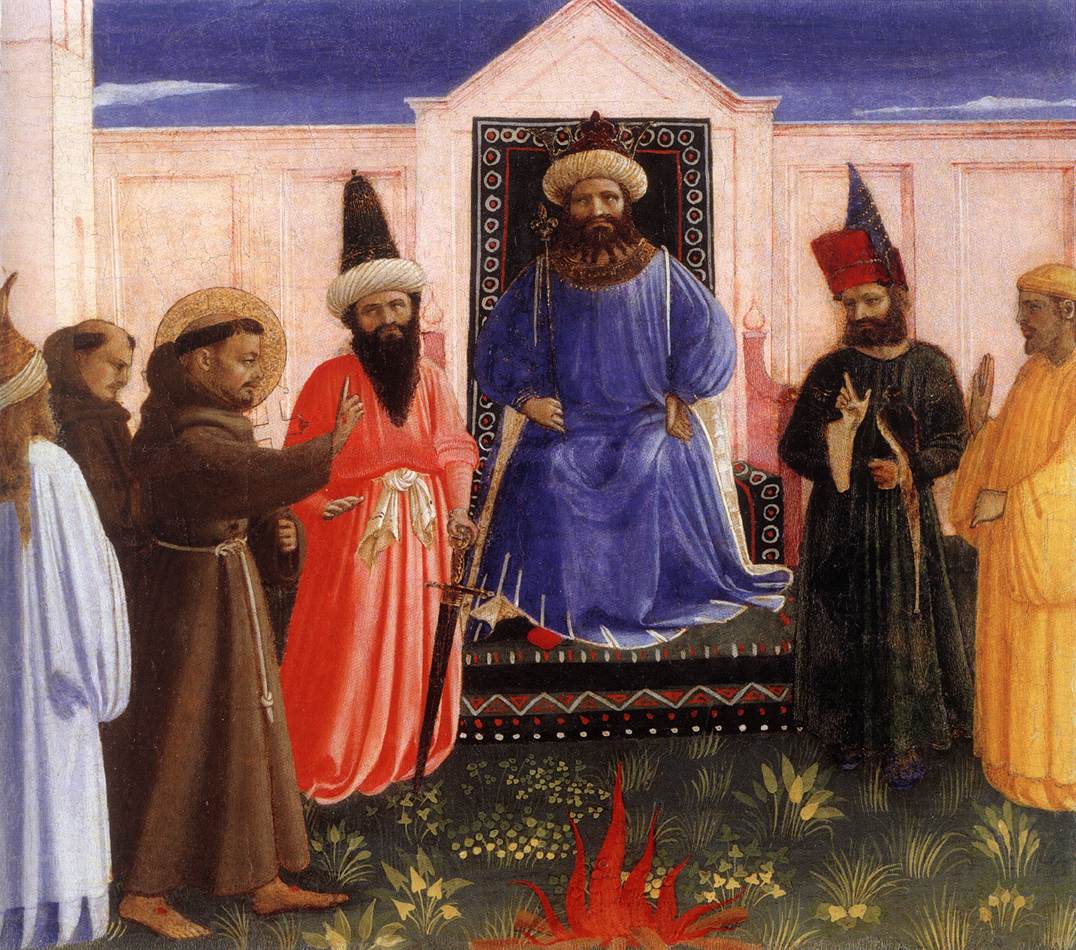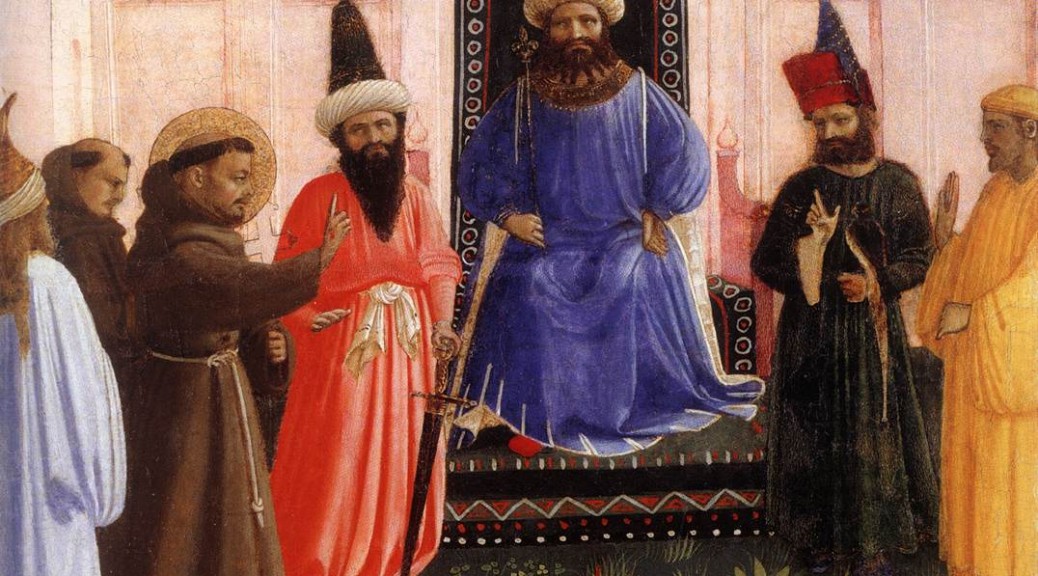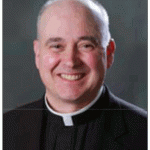(This is the Pastor’s Note from the March 29, 2015 Parish Bulletin for Mary Immaculate of Lourdes Parish. It is a summary of Father’s “Fifth Conference for our Lenten Mission series” lecture held during the Stations of the Cross on Friday nights at the parish during Lent, 2015.)
As we concluded our Conference last week, the Christian Jerusalem of the Eastern Roman Empire was violently destroyed by the Persian armies in A.D. 614. Scarcely had the Romans recovered Jerusalem and begun to rebuild, when the Arab armies of the new religion of Islam took possession of the city in A.D. 638, after a four month siege. Through the mediation of the Christian Patriarch Sophronius with Caliph Omar, Jerusalem capitulated on fair and generous terms.
Although the first period of Muslim role over Christian Palestine was tolerant, by the time of the Christian Millenium, A.D. 1000, the situation had changed to one of violent oppression and religious intolerance. The Christians of Jerusalem were sore-oppressed. Christians pilgrims from the west seeking to visit the Holy Places were frequently attacked, plundered, held hostage, or even murdered. Christian shrines were no longer respected and some were destroyed. This state of affairs was the chief contributing factor to Pope Urban II’s call in 1095 for an armed pilgrimage, a “crusade”, to free Jerusalem.
The Age of the Crusades is much out of favor now, but in its day the Crusade was a hugely popular movement in Western Europe. It has permanently marked Catholic Christianity and shaped it in ways which still affect us although we may not be aware of its influence. How easily, for example, do we speak of zealous dedication to a good cause in terms of a holy war, a crusade. People are identified as “crusaders” for civil rights or “crusaders” for the unborn.
Between 1098-1250 A.D. there were seven Crusades directed towards wresting the Holy Land from Muslim control. The First Crusade was the most successful. Jerusalem was taken in 1099 and a new Latin Kingdom of Jerusalem was established there which lasted 88 years until the resurgent Muslims under Saladdin overcame them.
The Third Crusade (1188-1192), the one associated with King Richard the Lionhearted of England, recaptured the coastal towns of Palestine for the Crusader Kingdom and made it possible for Christian pilgrims to resume their visits to the Holy City under Muslim control. The Sixth Crusade (1228-1229) of the Holy Roman Emperor Frederick II was successful enough on the battlefield to gain concessions from the Muslims on who controlled Jerusalem. The Christians once again were to possess the city, but they could not put up defensive walls and the Muslims in the city remained without restriction. In 1244, the Muslims attacked defenseless Jerusalem, massacred large numbers of Christians, and burned many churches, including the Church of the Holy Sepulchre.
The Seventh Crusade (1248-1250) was the best organized and the best-equipped, led by King St. Louis IX of France. It met with defeat, however, on account of the misfortunes of war. The last crusader fortress of St. Jean d’Acre fell in 1291. The Western Crusader presence in the Holy Land had lasted 192 years, 1099-1291. Considered from its principle objective of recovering the Holy Land for Christendom and then holding on to it, we have to say that the crusading mission failed.
But even in failure the Cross had its exultation. In 1219, during the Fifth Crusade (1218-1221), St. Francis of Assisi appeared in the Crusader camp in Egypt. After gaining permission to pass beyond the Christian lines with another friar, Brother Francis made his way towards the Saracen lines calling out “Sultan! Sultan!”. In short order the two friars were seized, maltreated, and held captive. Eventually, his captors gave in to his request and brought him into the presence of the Sultan.
There Francis preached the Gospel to him and called upon him to repent. To prove his earnestness, Francis offered to step into fire and if the fire did not harm him then that would be a proof to the Sultan that the God of the Christians was the one true God. The Sultan would not let Francis carry out such a test, but something about him held the Sultan’s sympathy. He offered Francis precious gifts, which the Saint refused, not even as alms for the poor. What was it that moved the Sultan’s heart towards Francis, in spite of the bitter religious war that was raging between the Muslims and the Christians? We may wonder. Was it perhaps that Francis of Assisi, so filled with the charity of Christ, radiated in his face the Face of Christ, and that was what the Sultan saw that compelled him to listen, to want Francis to stay with him, and ultimately to give him safe-conduct back to the Christian camp.

We do know that it is St. Francis’s legacy which has left the most permanent mark of the Crusader-era on the Holy Land until this very day. Each year, at the Good Friday Liturgy, a collection is taken up for the Holy Land Shrines which are under the care of the Franciscans. After the destruction of Christian Jerusalem in 1244 the Muslim ruler invited the friars of St. Francis to become the custodians of many of the Christian shrines. From the 13th century on, they would be the guardians who would receive Christian pilgrims who, in spite of all the dangers and illuminated by the thought of Heaven, still made their way to Jerusalem to greet the Holy City as Christ Himself once had.

